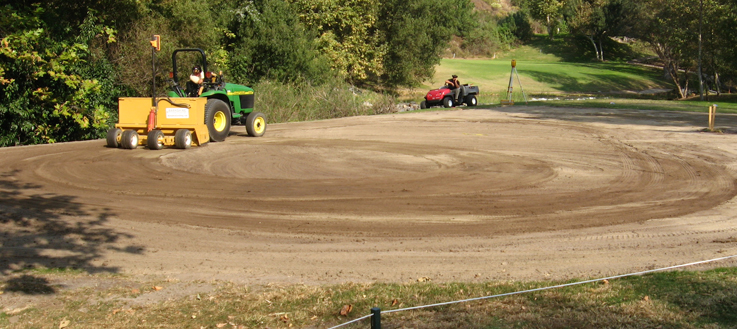
Avoiding the 'Idea of the Day' Syndrome
Avoid "Idea of the Day" syndrome and keep your golf course on track for long-term success
It may have happened at your club. It could have struck a club nearby. The sad truth is when the "Idea of the Day" syndrome hits, it can harm a club for years to come.
So what exactly is this syndrome and what are the signs? You might be surprised. Learn about what it is and what to look out for.
When a Good Idea Goes Bad
"Idea of the Day" is simply the tendency of clubs to take the path of least resistance when ideas, many of which involve changing the course or its play, are raised at club or board meetings. You've been there. Someone brings up the notion to move a bunker or a tee, take out some trees or plant new ones, or convert the greens to a new type of grass. Before you know it, the project takes off like a plane without a pilot.
Why is it so bad to act on what might seem like a good idea? Because ideas that are not in line with your long-term goals can interrupt the continuity and flow of the course. Such ideas waste golf course maintenance resources and can lead to other unexpected expenses when surrounding areas need to be modified as a result of this "great" idea.
This happens, especially at private clubs and homeowner associations with board members or green committees, and at any other golf club without a long-term plan.

Steps for Keeping Your Golf Course on Track for Long-Term Success
Have a Plan
There are things you can do to fend off "Idea of the Day" syndrome. First and foremost, have a detailed 10- to 15-year master plan for your course.
Work with a Qualified Architect
Perhaps the only thing worse than "Idea of the Day" syndrome is the "We Can Do That Ourselves" syndrome. After all, how hard can designing a golf course be for people who have been playing golf their entire lives? Well, plenty. By far, the worst changes to courses that BrightView experts have seen in their careers were ones designed, and in some cases built, by members of clubs. Find a qualified architect to help you create your plan, whether for small changes or large. Visit the American Society of Golf Course Architects for a list of options and take time to interview your own candidates to find the right fit for your golf club.
Balance Detail and Affordability
Together with your architect, scope out plan details and proposed timing on matters, such as bunker renovations, tee modifications, irrigation upgrades, turf removal, monostand turf, and greens reconstruction. The golf course maintenance plan should take into account water availability and how to conserve resources. Any maintenance facility rebuilding, added (or removed) water features, and plans for renovation of the club's golf-related buildings should also be noted in the plan.
Costs for a master plan can range anywhere from $5,000 to $15,000, depending on the level of detail, but the money spent will more than make-up for the expense of acting too quickly on the "Idea of the Day. "
Review Your Plan Annually
Even though your golf maintenance plan is focused on the future, make it a practice to review plan details annually. Include members of your green committee, finance committee, and anyone involved in long-range planning for your club in the review. Discuss what money is available and prioritize which improvements will be made in the next year.
Create a Holding Bin
By creating your master plan and reviewing it once a year, your club is more likely to stay focused on a direction. However, this alone won't stop the generation of "great" ideas or suggestions for club improvements.
With or without a master plan, there is something you can do to avoid acting impulsively: have a virtual "holding bin" for ideas. Simply have a rule that any ideas for changing the golf course are noted and held for six months. Most ideas that seemed brilliant at the time don't stand the test of time. Those that do probably deserve serious consideration.
A Unified Vision as a Position of Strength
Keep these things in mind and you'll not only inoculate your club against "Idea of the Day" syndrome, but you'll also help create a more unified atmosphere where everyone is working toward a common goal. While this is particularly useful in private clubs with a board-driven environment, it's also a great strategy for other clubs. Most importantly, having a golf course maintenance plan provides a position of strength, not just for the club, but also for those who sometimes have to speak up against the "Idea of the Day. "
Outstanding Golf Course Maintenance
You set the standard, we make it happen. We’re laser-focused on continuously refining the science, technology, and operations of golf course maintenance so we can bring our clients a competitive advantage and a course their players are proud of.



